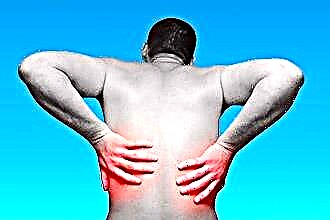The left ventricle is the heart chamber from which the great circle of blood circulation begins. As a result of exposure to certain factors, changes in this chamber of the heart may appear. What are the changes in the left ventricular myocardium? Normally, it undergoes modifications throughout its life. In a newborn, its volume is 5.5-10 cm3, and by the age of 18 the size of the left ventricle reaches 130-210 cm3... Due to the development of pathologies of the cardiovascular system, diffuse, metabolic, focal disorders in the heart muscle can occur.

Description of pathology
Changes in the left ventricular myocardium can provoke various diseases or metabolic disorders in the heart muscle. Moderate disturbances in the functioning of the heart can be diffuse or focal. The first type is characterized by a malfunction of the left ventricular myocytes, as a result of which they contract incorrectly. That is, an electrical impulse is incorrectly conducted through these cells.
The second type is focal changes. In this case, scars are formed on the wall of the left ventricle. They are made up of connective tissue that is unable to conduct electrical impulses.
Moderate metabolic disorders can spontaneously return to normal, but if such failures occur frequently, then the myocardium cannot recover.
Thus, changes can be transformed into irreversible ones. In the process of aggravating the situation, they are able to provoke cardiac pathologies.
When there is a discrepancy between energy expenditure and its supply to the myocardium, then dystrophic changes will be the result. But even dystrophy does not always manifest itself, and if there are symptoms, then often it is increased fatigue, which is not always paid attention to.
Left ventricular hypertrophy is a condition that the body activates to compensate for the blood supply. This happens especially often if there is mitral valve insufficiency. Hypertrophy affects the condition of the walls of the left ventricle, they lose elasticity. This also applies to the septum between the ventricles.
With hypertrophy, thickening of the walls also occurs. It is not always uniform, it can occur according to the focal principle, that is, only in a certain area of a given cavity. And myocardial dystrophy leads to the fact that the wall of the left ventricle is significantly thinned, and the chamber cavity is stretched.
Causes
Myocardial changes occur for many reasons, and it is very important to diagnose them correctly. Some of them are diseases that can even be life threatening.
The causes and results of myocardial disorders are:
- atrial fibrillation;
- steanosis of the heart valve (aorta);
- muscular dystrophy.
Pathological changes in the left ventricular myocardium can occur due to inflammatory diseases. This is myocarditis, which provokes both diffuse and focal disorders. And he, in turn, is caused by such pathologies as rheumatism, flu, measles, rubella. Various autoimmune diseases also provoke changes in the myocardium.
It is very important for the body that metabolic processes function normally, otherwise dystrophic changes occur, as a result of which myocytes change. Metabolic disorders are fraught with the fact that the heart muscle does not receive enough nutrients and oxygen. This condition is also called cardiac dystrophy.
Kadiodystrophy can occur due to:
- Renal and hepatic failure.

- Diabetes mellitus.
- Disorders of the thyroid gland, namely its hyperfunction.
- Anemia.
- Infectious diseases of both acute and chronic nature, the most popular are influenza and tuberculosis.
- Intoxication of the body - alcoholic, narcotic, poisoning with drugs and other chemicals.
Additionally, excessive physical exertion, emotional distress, stressful situations can be the causes of cardiac dystrophy. All these factors lead to chronic overwork. Another metabolic disorder provokes starvation or poor nutrition.
In children, a change in the left ventricular myocardium may also appear, and cardiac dystrophy is the cause of this condition. The factors that provoked its manifestation in a child can be mental overload, decreased physical activity.
Metabolic disorders in the myocardium can occur due to a failure of the repolarization process. At the same time, the processes of exchange of potassium and sodium at the intracellular level are disrupted. And also metabolic disorders occur due to such factors:
- hypothermia;
- increased stress, both emotional and physical;
- obesity;
- chronic diseases.
In addition, changes in the LV myocardium result from the progression of atherosclerosis, ischemia, hypertension, arrhythmia. These are serious diseases that provoke myocardial hypertrophy.
Symptoms
Quite often, these changes are asymptomatic for several years, or they appear insignificantly.
One of the most common signs of the presence of pathological changes in the heart muscle is angina pectoris. Since when the wall of the left ventricle thickens, there is a compression of the vessels that feed the muscle.
Atrial fibrillation and ventricular fibrillation can be the causes of the development of myocardial changes, as well as be their consequence.
Another symptom of changes in the myocardium is "heart sinking". In this case, the person feels that the heart does not beat for several seconds. As a result, he may lose consciousness.
Additionally, the following signs may occur:
- persistent increase in blood pressure, its frequent drops;
- headache;
- pain in the region of the heart;
- weakness, fatigue;
- sleep disorders.
Diffuse changes
What are "diffuse type changes in the left ventricular myocardium"? This type is the most common. In this case, not only the left ventricle is affected, but also the entire myocardium, since diffuse changes are characterized by a uniform lesion.
 Diffuse disorders are manifested both in moderate pathological processes and in acute situations, such as myocardial infarction. In the latter case, there are changes in the structure of tissues, and a violation of metabolic processes. Diffuse changes are the accumulation of myocytes in the left ventricle, which, under the influence of certain factors, have changed, and do not conduct impulses.
Diffuse disorders are manifested both in moderate pathological processes and in acute situations, such as myocardial infarction. In the latter case, there are changes in the structure of tissues, and a violation of metabolic processes. Diffuse changes are the accumulation of myocytes in the left ventricle, which, under the influence of certain factors, have changed, and do not conduct impulses.
With diffuse disorders of the left ventricular myocardium, swelling of the legs, tachycardia, and even accumulation of fluid in the lungs are added to the general symptoms.
Diffuse changes in the left ventricular myocardium can provoke a deterioration in the blood circulation process, myocardial hypoxia and the appearance of necrotic foci. The most dangerous consequence of these disorders is myocardial infarction.
Nonspecific anomalies
These violations are recorded on the ECG. The diagnosis sounds like "moderate nonspecific changes in the myocardium." They are directly related to the repolarization processes. This pathological condition affects the recovery process of myocytes after an impulse has passed through them.
As a rule, such violations are not dangerous, and, when the necessary measures are taken, are quite reversible, since they are provoked by various past diseases, hormonal disruptions, and disturbed metabolic processes.
Complications can be angina pectoris, heart failure, and even myocardial infarction.
Changes in the left ventricular myocardium may be harmless to human health. Quite often, they are diagnosed during routine examinations, that is, by accident. This means that there are almost no characteristic symptoms. But do not underestimate this condition - if you do not take the necessary measures, then the condition may worsen. Usually, with moderate changes, doctors recommend changing the diet, giving up bad habits, and improving the psycho-emotional state.




